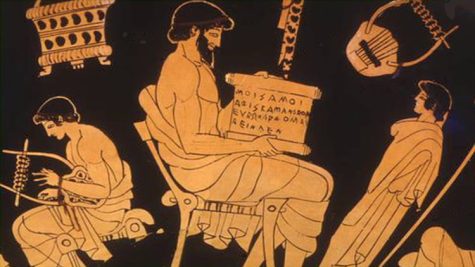The Origins of Writing
A look into where writing first originated.

Whether you’re a high school student assigned to write an essay for English class or an award-winning author, writing causes fear and frustration for everyone.
It appears that discouraged authors who long for a muse or divine intervention are continuing a 5,000-year-old tradition.
Cuneiform, the first writing system, emerged in Sumer approximately 3200 BC to record transactions involving wheat, real estate, and recipes. Consider these as the earliest forms of spreadsheets. Scribes used clay tablets to capture the data.
Nisaba, who was originally the Sumerian goddess of grain, came to be identified with writing. She was shown carrying a clay tablet and a gold stylus.
A new class of scribes took to Nisaba because it was typical for people to adopt a god or goddess for their work. Glory be to Nisaba, say practice tablets from schools that educated youthful scribes. Poets praised her impact and gave her credit for helping obedient kids develop beautiful handwriting.
She had an Egyptian equivalent named Seshat, which means “female scribe.”
Seshat directed the reed pens of scribes as priests conversed with the divine; she could be recognized by a stylised papyrus on her headpiece and a stylus in her right hand.
Writing was primarily used by the Greeks and Romans as a means of communication with the gods. They looked to the nine Muses, collectively known as Zeus and Mnemosyne’s daughters. The most notable sister is Calliope, who is notable not just because a musical instrument bears her name, but also because she was regarded as the most eloquent of the three.
Since then, the Muses have developed into a single, all-encompassing “muse” that acts as a source of inspiration.
Gods and other mythical characters are not just a feature of Western culture.
The characters for the Chinese language are credited to the Chinese historian Cangjie, who flourished in the 27th century B.C. According to legend, he was motivated by the turtle’s vein pattern. (In those days, Chinese people frequently wrote on turtle shells.)
According to a competing theory, the Chinese character system was developed around 2000 B.C. by the folk hero and cultural figure Fuxi and his sister Nüwa. Yet, Cangjie’s name continues to be used to refer to the method that enables Chinese characters to be entered using a regular QWERTY keyboard; this method is known as the Cangjie Input Method.
Before putting pen to paper in India, authors still pray to the elephant-headed Hindu god Ganesha. Ganesha, who is known for removing obstacles, can have special significance for people who experience writer’s block. Moreover, there is Saraswati, the eloquent Hindu goddess of learning and the arts.
The Itzamná deity was revered by the Mayan people of Mesoamerica as the creator of writing, calendars, medicine, and religious rituals—the four cornerstones of civilization. Being portrayed as a wise old man with no teeth conveyed that he was not to be feared, which is crucial for someone who wants to encourage an anxious-inducing task like writing.









